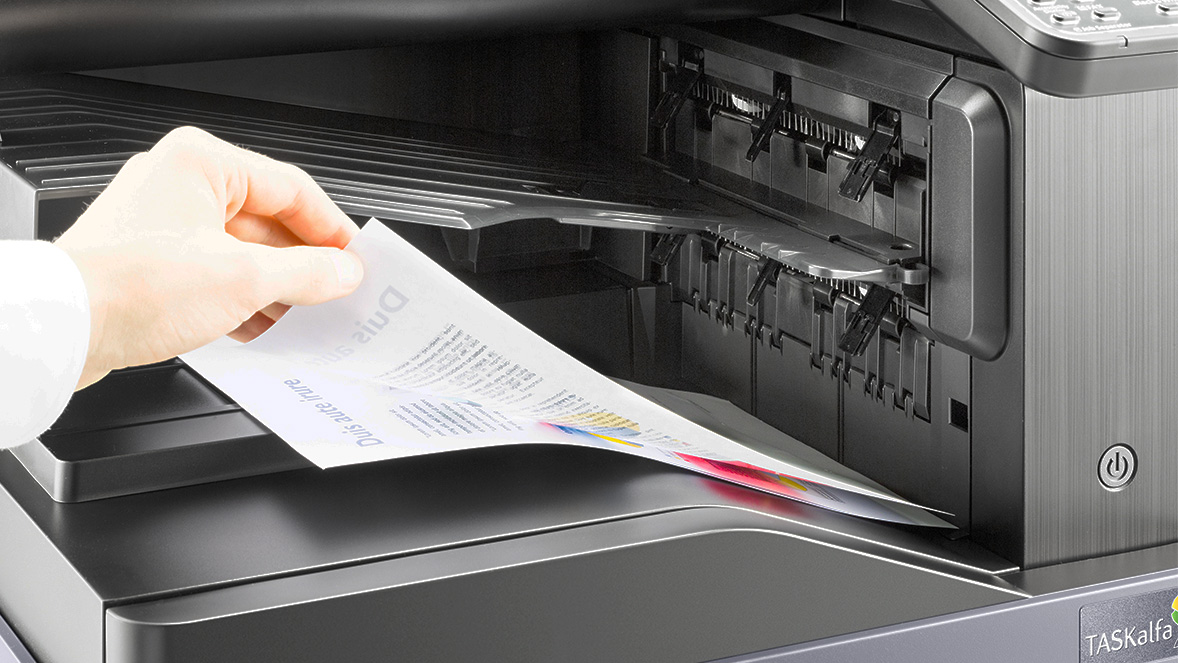Enterprise Mobility Management (EMM) bringer virksomheder et skridt tættere på det grænseløse kontor. Men alt for mange organisationer lægger ikke nok omhu i at skabe en brugervenlig mobilitetsudskriftsløsning, der giver medarbejdere mulighed for at udskrive dokumenter når som helst og hvor som helst. Det er en relativt ligetil proces, når virksomheder fuldt ud forstår processen. Den rigtige mobilitetsudskriftsløsning integreres med eksisterende EMM-systemer, sparer omkostninger, opretholder sikkerhed og forretningseffektivitet. Mobil udskrivning er et vigtigt emne i den hurtigt bevægende digitale verden.
Der kan være en tendens for organisationer at bevæge sig mod det papirfrie kontor-koncept, men det er usædvanligt for dem at stoppe med at udskrive helt. Trods vigtige innovationer såsom DocuSign, er der en række tilfælde, hvor udskrivning stadig er den foretrukne mulighed. For at få mest muligt ud af deres virksomhedsmobilitetsløsninger, skal virksomheder sikre, at mobile arbejdstagere nyder de samme privilegier som kontorbaserede medarbejdere. En del af det er at tillade dem at udskrive vigtige dokumenter, når og hvor de ønsker det ved hjælp af mobile enheder.
“Establishing a printing solution is fundamental to mobility”

Selv når de er på farten, en stadig mere populær tendens på tværs af en række sektorer og jobroller, har professionelle behov for at kunne udskrive. At sikre, at de kan gøre det effektivt og sikkert uden unødvendige komplikationer, er en central del af at opnå virksomhedsmobilitet for enhver virksomhed, der ønsker at optimere deres arbejdsmetoder.
Arbejde på farten
Enterprise Mobility Management er en forudsætning for en moderne organisation. De fleste kontormedarbejdere udfører i dag en betydelig del af deres arbejde på mobile enheder væk fra deres kontorer. Der er en voksende vilje til at arbejde på farten med en hvilken som helst enhed, der er ved hånden. Smartphones, tablets og andre bærbare enheder letter et hurtigt svar på kundernes behov. I teorien fører afskaffelsen af geografiske grænser til reducerede omkostninger og stigende produktivitet. Det bør også glæde kunderne, især i brancher som bank, forsikring og sundhedsvæsen, hvor hurtighed af service er en af de største differentiatorer.
Men en virksomhedsmobilitetsstrategi er ikke komplet uden en nøje overvejet mobiludskriftsstrategi. Hvis enkeltpersoner kan udskrive dokumenter eksternt fra enhver enhed, forbedrer det deres fleksibilitet, men alt for mange virksomheder bruger primitive og potentielt farlige metoder. Det er en almindelig praksis, for eksempel at give enhver mobilenhed, der er på samme netværk som en organisations kontorbaserede computere, mulighed for at udskrive uden begrænsninger. Men at have ingen tilladelser, ingen analyser og ingen regler for mobile enheder er en opskrift på katastrofe. For det første tilslutter enhederne sig det samme netværk som computere, der skal behandle følsomme virksomhedsdata. For det andet forårsager det så meget forvirring at give alle adgang til alt på mobile enheder, at IT-afdelinger oversvømmes med forespørgsler.
Udskriftsstyringsværktøjer er essentielle
Det, brugerne af mobile enheder kræver, er adgang til de typer af udskriftsstyringsværktøjer, der bestemmer adgangsrettigheder for desktopbrugere. For sikker administration er den bedste metode at integrere de mobile enheder i en eksisterende EMM-løsning, såsom MobileIron eller XenMobile. Der er forskellige teknologier, der kan udføre integrationsprocessen, herunder ThinPrint Mobile Print. En mobilenhed opnår en profil, der beskriver, hvilke printere den har ret til at bruge. Når de er sendt fra en brugers enhed, kan mobile udskriftsopgaver krypteres og gemmes på systemet. Den mest bekvemme metode til hentning er ved hjælp af en QR-kode fra mobilenheden, men et badge-swipe eller en pinkode fungerer også godt.
For yderligere at sikre enhederne er det en god idé at forhindre, at mobile udskriftsopgaver går gennem den offentlige cloud. Ved hjælp af private clouds og traditionelle datacentre er det muligt at konfigurere hardware, datalagring og netværk for at stoppe uønskede gæster fra at få adgang til netværket. Brugen af EMM-løsningen oven på et traditionelt datacenter eller en privat cloud skaber det højeste niveau af sikkerhed.
Overkommelige løsninger findes derude
Disse løsninger behøver ikke at være dyre. Der er ingen grund til at investere i mobile-aktiverede printere, fordi mobil udskrivning kan leveres til den eksisterende flåde af printere. Når en virksomheds EMM-systemer bruges, er der ingen grund til at opdatere routere eller netværk. Systemet er konfigureret til at understøtte et fuldt udvalg af desktop, laptop og mobile enheder. Omkostninger kan også holdes nede ved at gøre systemet enkelt nok, så brugere kan tage ansvar for deres egen printeradgang. De fleste mobile enhedsbrugere er ret kloge, når det kommer til at forstå nye apps. Den bruger-vendte del består af en integration i printdialogen leveret af iOS eller Android og en app til at forbinde til forskellige printere på netværket. At undgå tidsspildende opkald til IT-helpdesk bør være en prioritet for alle virksomheder. Med en veldesignet løsning ville IT-afdelingen indstille adgangsrettighederne, og brugerne ville gøre resten.
Sikre og brugervenlige muligheder findes
Virksomhedsmobilitetsløsninger handler om at øge effektiviteten ved at fremskynde responstider. De handler også om at reducere omkostninger. Mobile enheder er mere overkommelige end desktop-computere eller laptops, så de fleste organisationer er glade for, at medarbejdere bruger dem. iPads har udviklet sig, og split-screen teknologi er nu tilgængelig, hvilket gør dem egnede til en bredere vifte af job. Selvom de aldrig vil blive brugt til alt, er trenden klar. I mellemtiden fortsætter udskrivning med at være vigtig for de fleste organisationer trods bevægelsen mod papirfrie kontorer. Ingen ved, hvad der vil ske om to årtier, men for nu er det en integreret del af at etablere den bedst mulige virksomhedsmobilitetsløsning at aktivere mobile enheder til at udskrive på en sikker og brugervenlig måde.
Mobilitet
Organisationer står til at opnå betydelige gevinster ved at gøre mobil arbejde til en mulighed for deres professionelle.



